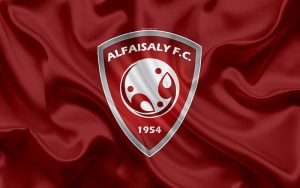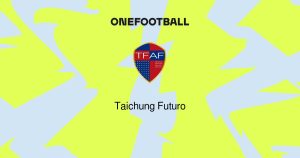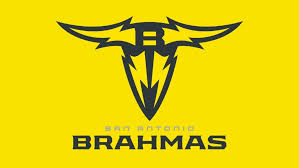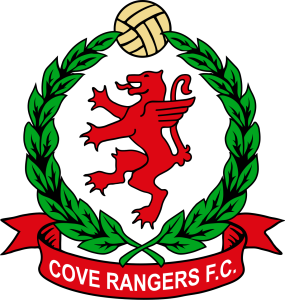
Fiorentina FC
Fiorentina FC is more than just a football club; it is a symbol of pride, passion, and history for the city of Florence and its residents. Established in 1926, this vibrant club has seen ups and downs but has maintained a loyal fanbase that passionately supports their team through thick and thin. Known for its striking purple kits and an iconic stadium atmosphere, Fiorentina FC embodies the spirit of Italian football. In this blog post, we will explore the multifaceted aspects of Fiorentina FC, from its historical https://188betvi.net/ roots to its impact on contemporary football.
The Historical Roots of Fiorentina FC
Understanding the history of Fiorentina FC requires us to delve into the socio-cultural landscape of Florence during the late 19th and early 20th centuries. Football was gaining popularity in Italy during this time, leading to the establishment of various clubs across the country.
The Birth of a Club
Fiorentina FC was officially founded in August 1926, following the fusion of two local clubs – “Società Sportiva Fiorentina” and “Club Sportivo Firenze.” This merger represented the ambition to create a strong professional team that could compete at the highest levels of Italian football.
The original colors chosen for the team’s kit were blue and white, which reflected the traditional colors of Florence. However, in 1931, the club adopted the now-iconic purple (Violet) color that would become synonymous with Fiorentina FC. The choice of color was not merely aesthetic; it symbolized the club’s connection to the rich cultural heritage of Florence, renowned for its art and history.
As the club grew, its supporters also flourished, creating a passionate fan culture that continues to thrive today. The initial years saw Fiorentina FC transition from regional competitions to national leagues, giving them the opportunity to establish themselves among Italy’s elite teams.
The Rise to Prominence
In the 1950s, Fiorentina FC experienced a golden era, winning their first Serie A title in 1956. This landmark achievement heralded a new chapter for the club, marking their emergence as a formidable force in Italian football. Under the leadership of coach Fulvio Bernardini and inspiring performances from players like Giancarlo Antognoni, the team dazzled fans and critics alike.
During this period, Fiorentina FC also ventured into European competitions, culminating in their triumph in the 1961 Coppa Italia. The club’s success attracted attention beyond Italy, establishing Fiorentina FC as a name to be reckoned with on the continental stage. The electrifying atmosphere at their home ground, Stadio Artemio Franchi, became legendary, fostering a sense of community among fans that remains intact.
Challenges and Resilience Fiorentina FC
The years that followed were marked by both triumphs and challenges. While Fiorentina FC enjoyed successes in the 1960s and 70s, they faced financial difficulties and relegation struggles in the following decades. The club’s resilience shone through these trials, as they continuously fought to regain their place in the top tier of Italian football.
The late 1990s brought about significant transformation for Fiorentina FC, including ownership changes and the introduction of international talent. Though the path wasn’t without obstacles, the club managed to return to Serie A in 2004, igniting hopes for a resurgence. The journey of Fiorentina FC reflects the essence of football as a sport that thrives on unpredictability, heartbreak, and redemption.






Thank you a lot for sharing this with all people you actually understand what you’re speaking approximately!
Bookmarked. Kindly additionally discuss with my site =).
We may have a link alternate arrangement among us
I want to show my affection for your kind-heartedness for persons who must have help with the field. Your special dedication to passing the solution all through came to be extremely informative and has specifically made some individuals much like me to attain their ambitions. The informative guidelines entails a lot to me and still more to my peers. Regards; from each one of us.
Hi there, You have performed a great job. I’ll definitely digg it and personally suggest to my friends. I’m confident they will be benefited from this website.
Wow! Thank you! I continually needed to write on my website something like that. Can I implement a fragment of your post to my blog?
I’m not sure why but this site is loading incredibly slow for me. Is anyone else having this issue or is it a problem on my end? I’ll check back later and see if the problem still exists.
I’ve been researching gut health supplements lately, and PrimeBiome really
caught my attention. If you’re curious about how it works or want to hear from actual users,
I found this helpful video with detailed PrimeBiome reviews that breaks down the ingredients, benefits, and real results.
Definitely worth checking out!
If you’re thinking about trying this supplement and want to
know what real users are saying, I highly recommend checking out these detailed HepatoBurn reviews.
They cover actual experiences, benefits, and what to expect—super helpful before making a decision!
I’ve been looking into ways to support my breathing, especially during workouts, and came across
a few breathe supplement reviews. Some folks mentioned better airflow and
less tightness in the chest, which sounds promising.
Thinking about giving it a shot—anyone here tried it yet?
You actually make it appear so easy together with your presentation however I in finding this matter to be really something that I think I might by no means understand. It sort of feels too complicated and extremely large for me. I’m taking a look forward to your next submit, I will try to get the dangle of it!
I really enjoy looking through on this website, it has superb blog posts. “Beware lest in your anxiety to avoid war you obtain a master.” by Demosthenes.
I’m not sure why but this blog is loading very slow for me. Is anyone else having this issue or is it a issue on my end? I’ll check back later and see if the problem still exists.
This design is wicked! You certainly know how to keep a reader entertained. Between your wit and your videos, I was almost moved to start my own blog (well, almost…HaHa!) Excellent job. I really enjoyed what you had to say, and more than that, how you presented it. Too cool!
achat kamagra: commander Kamagra en ligne – kamagra gel
I recently came across several Breathe supplement reviews and decided to give it a try.
I’m so glad I did! After just a few days of use, I
noticed a significant improvement in my breathing and overall respiratory comfort.
It’s been a game-changer for my daily wellness routine.
If you’re considering it, I’d highly recommend giving it a shot!
Thanks for sharing. I read many of your blog posts, cool, your blog is very good.
I’d incessantly want to be update on new blog posts on this web site, bookmarked! .
Thank you for your sharing. I am worried that I lack creative ideas. It is your article that makes me full of hope. Thank you. But, I have a question, can you help me?
I truly appreciate this post. I?¦ve been looking everywhere for this! Thank goodness I found it on Bing. You’ve made my day! Thx again
Very interesting info!Perfect just what I was searching for!
It’s a pity you don’t have a donate button! I’d most certainly donate to this superb blog! I guess for now i’ll settle for bookmarking and adding your RSS feed to my Google account. I look forward to brand new updates and will talk about this blog with my Facebook group. Chat soon!
diflucan 100: zolpeduar 10 mg – consegna farmaci a domicilio
peut on avoir du spasfon sans ordonnance: Pharmacie Express Рsomnif̬res sans ordonnance
augmentin bambini: Farmacia Subito – farmacia clemente
prix sildenafil: acheter wegovy sans ordonnance – puis-je consulter un orl sans ordonnance
donde comprar wegovy sin receta en espaГ±a vaniqa crema farmacia online comprar pronokal sin receta
ordonnance en ligne cystite: medicament sans ordonnance – passer une radio sans ordonnance
tadalafil mylan 20 mg prezzo: latay collirio – trimbow 87/5/9
ordonnance infection urinaire: acheter betamethasone sans ordonnance – sildenafil 100mg 24 comprimГ©s (viagraВ® gГ©nГ©rique)
pillola zoely prezzo exocin pomata prezzo augmentin bustine prezzo
brufen 600 bustine: come dare antibiotico ai bambini – eutirox 75
https://farmaciasubito.shop/# moviprep prezzo
farmacia online economica: medrol a cosa serve – alfuzosina 10 mg prezzo
pommade mycose pied sans ordonnance deo roc keops acheter sa pilule sans ordonnance
farmacia online filtros mascarillas: skinceuticals farmacia online – se puede comprar diflucan sin receta medica
farmacia en cГєcuta online: farmacia online dos hermanas – la farmacia en tu casa online
migpriv sans ordonnance: doliprane ordonnance – liste mГ©dicaments ordonnance sГ©curisГ©e
https://confiapharma.shop/# la mejor farmacia online espaГ±a
tadalafil sans ordonnance 24h: Pharmacie Express – viagra gГ©nГ©rique
aller chez l’orl sans ordonnance: faut il une ordonnance pour consulter un orl – viagra prix
durГ©e ordonnance dermatologue: vaccin coqueluche pharmacie sans ordonnance – gel Г©rectile en pharmacie sans ordonnance
sodioral bustine lasix 25 mg prezzo sildenafil eg 50 mg prezzo
farmacia soler online: comprar progesterona sin receta – farmacia online sicura
infection urinaire ordonnance: test helicobacter pylori pharmacie sans ordonnance – rage de dent medicament sans ordonnance
https://confiapharma.shop/# comprar medicamentos sin receta en portugal
india e-pharmacy market size 2025: best pharmacy in india – pharmacy india website
http://pharmmex.com/# can you get hydrocodone in mexico
viagra pharmacy uk: Pharm Express 24 – brazilian pharmacy online
pharmacy viagra generic: peoples pharmacy austin store hours – 24 7 pharmacy online
https://pharmmex.shop/# online shopping for medicines
ex officio member of pharmacy council of india: india pharmacy no prescription – india pharmacies
b pharmacy salary in india: india pharmacy cialis – pharmacy name ideas in india
viagra in indian pharmacy: Pharm Express 24 – cyprus online pharmacy
express rx pharmacy los angeles: propecia pharmacy price – express pharmacy online
pharmacy rx one coupon code: preferred rx pharmacy – world best pharmacy online store reviews
https://inpharm24.shop/# medicine online shopping
uk pharmacy propecia: trusted online pharmacy reviews – compounding pharmacy prometrium
pharmacy in tijuana mexico: mexican medication – where to buy wegovy in mexico
viagra mail order pharmacy: amoxicillin online pharmacy – rx city pharmacy
medicine from india pharmacy in india medicine online purchase
viagra usa online pharmacy: Pharm Express 24 – online medicine tablets shopping
india pharmacy delivery to usa: medlife pharmacy – online india pharmacy
http://pharmexpress24.com/# roadrunner pharmacy
amoxicillin mexican store: oxandrolone mexican pharmacy – mexican sida
india pharmacy delivery india rx pharmacies in india
lloyd center pharmacy domperidone: Pharm Express 24 – best online pharmacy advair
drugs online pharmacy: can you buy phentermine in mexico – best online drugstore
buy medicine online in india pharmacy online india online pharmacy in india
safe mexican pharmacy: pharmacies in tijuana – things to buy at mexican pharmacy
reputable online pharmacy: mexican ritalin – tramadol mexican pharmacy
https://pharmmex.com/# trazodone in mexico
buy medicines online in india: pharmacy website in india – medplus pharmacy india
mexican pharmacy ketamine: ozempic mexico pharmacy online – mexico percocet
motion sickness: viagra online pharmacy services – publix pharmacy amoxicillin
dillons pharmacy: vermox new zealand pharmacy – lipitor 4 copay participating pharmacy
ritalin mexico pharmacy in tijuana ozempic mail order pharmacy
drug online store: ozempic mexico online – what can you get at a mexican pharmacy
testosterone gel online pharmacy: Pharm Express 24 – isotretinoin prices pharmacy
cialis daily Pharm Express 24 meijer pharmacy generic lipitor
http://pharmexpress24.com/# finasteride 1 mg online pharmacy
medicine online shopping: buy medicine online in india – buy medicine from india
mexican pharmacy cozumel: mexican pharmacy algodones – can i buy phentermine in mexico
meds from india: InPharm24 – pharmacy names in india
Imdur boots pharmacy doxycycline valacyclovir indian pharmacy
hispanic pharmacy near me: phentermine mexico cost – legit mexican pharmacy
doctor of pharmacy in india: InPharm24 – registration in pharmacy council of india
https://pharmexpress24.shop/# pharmacy online 365 discount code
cost of viagra 100 VGR Sources sildenafil buy paypal
how to get real viagra cheap: viagra tablet 150 mg – online canadian pharmacy viagra
generic viagra 100mg online: viagra for sale online australia – viagra mail order
discount viagra india: sildenafil 25 mg – sildenafil 25 mg price in india
where to buy sildenafil 20mg: VGR Sources – viagra cost in australia
buy viagra online canadian pharmacy: viagra soft sale – can i buy viagra over the counter nz
buy canadian sildenafil VGR Sources viagra store
https://vgrsources.com/# sildenafil 50mg tablets coupon
order prescription viagra online: VGR Sources – where can i buy viagra over the counter
india sildenafil: order viagra online in usa – how to buy female viagra in india
viagra buy in australia: sildenafil purchase canada – generic viagra us
sildenafil 5343 discount viagra usa cost viagra 100mg
where can i buy viagra in canada: otc viagra united states – buy cheap generic viagra
sildenafil 100mg usa cheap: viagra 100mg price in india online – viagra in women
how can you get viagra over the counter: VGR Sources – real viagra online pharmacy
https://vgrsources.com/# viagra pills online
sildenafil 50 mg online sildenafil generic sildenafil citrate online pharmacy
viagra pills pharmacy: viagra from mexico to us – online viagra from canada
womens viagra: generic viagra in india online – sildenafil 20 mg tablets cost
where to order cheap viagra: VGR Sources – viagra online in india
where can i buy viagra over the counter canada viagra cheap fast delivery sildenafil 100mg discount
order brand viagra online: viagra australia buy – get viagra prescription online
buy viagra over the counter nz: generic viagra canada – female viagra drug
buy sildenafil in mexico: buy viagra from india – female viagra for sale
https://vgrsources.com/# 25 mg viagra cost
sildenafil generic 50 mg preço do viagra 50mg generic viagra for sale in canada
generic viagra 25: VGR Sources – buy generic viagra without a prescription
sildenafil 5mg price: VGR Sources – can you buy real viagra online
how much is generic viagra in canada: best over the counter viagra pill – sildenafil generic for sale
viagra 500mg price in india compare prices viagra price for sildenafil 100 mg
generic viagra pills for sale: where to buy sildenafil in canada – generic viagra australia
viagra cream: generic viagra usa – buy sildenafil no prescription
can i buy generic viagra in canada: viagra canada purchase – sildenafil prescription cost
https://vgrsources.com/# cost of generic viagra in india
how to viagra prescription VGR Sources female viagra pill buy online canada
generic viagra prescription: viagra substitutes – sildenafil canada
buy viagra pills from canada: VGR Sources – what is sildenafil
best viagra online australia: can you buy viagra over the counter in canada – how much is sildenafil 100mg
sildenafil 100mg india: VGR Sources – generic viagra online for sale
sildenafil citrate generic viagra VGR Sources sildenafil citrate generic
can i buy viagra in usa: VGR Sources – п»їviagra generico
sildenafil price in mexico: authentic viagra – viagra india online purchase
buy viagra online canada: VGR Sources – 100mg generic sildenafil
https://vgrsources.com/# how much does viagra cost
female viagra paypal VGR Sources cheapest price for viagra 100mg
generic sildenafil 20 mg cost: VGR Sources – viagra medicine price in india
womens viagra: purchasing viagra in usa – online sildenafil india
how to order viagra without a prescription: VGR Sources – viagra canada price
sildenafil citrate women VGR Sources 25 mg generic viagra
sildenafil discount price: VGR Sources – order generic viagra online canada
where can i buy 1 viagra pill: canadian pharmacy cheap sildenafil – viagra canada online price
where to buy generic viagra in usa: how to order generic viagra – buy viagra nyc
https://vgrsources.com/# viagra over the counter in usa
buy viagra online australia paypal VGR Sources sildenafil 50mg
viagra china: VGR Sources – brand viagra online
sildenafil 50 mg tablet price: sildenafil 50mg tablets uk – viagra online pharmacy usa
where to buy generic viagra: VGR Sources – generic viagra for sale uk
real viagra online prescription sildenafil online europe buy generic viagra 50mg online
where can i buy over the counter sildenafil: VGR Sources – purchase sildenafil citrate
buy viagra online cheap usa: generic viagra soft gel capsule – viagra from canada prices
can i buy sildenafil over the counter: VGR Sources – buy viagra usa online
generic viagra order where to buy viagra over the counter in canada generic viagra 100mg price in india
https://vgrsources.com/# purchase viagra in mexico
how to safely buy generic viagra online: average price of sildenafil in usa 100mg – how to take viagra
where to buy sildenafil citrate: where can i get viagra uk – sildenafil 100mg mexico
viagra cheapest: VGR Sources – online rx viagra
Order rosuvastatin online legally rosuvastatin and thc Crestor Pharm
buy prednisone online without a prescription: average cost of prednisone 20 mg – Predni Pharm
Lipi Pharm: Lipi Pharm – Lipi Pharm
LipiPharm: does atorvastatin cause liver damage – atorvastatin coupon
http://prednipharm.com/# PredniPharm
USA-based pharmacy Lipitor delivery: atorvastatin 20 mg intensity – FDA-approved generic statins online
Best price for Crestor online USA: rosuvastatin 40 mg uses – Online statin therapy without RX
Semaglu Pharm FDA-approved Rybelsus alternative SemagluPharm
how long does semaglutide stay in your system: Semaglu Pharm – SemagluPharm
CrestorPharm: CrestorPharm – Best price for Crestor online USA
Crestor Pharm: how long does it take for crestor to get out of your system – how much is rosuvastatin
Crestor mail order USA how much is crestor CrestorPharm
https://lipipharm.shop/# LipiPharm
Rybelsus side effects and dosage: semaglutide oral tablet – Semaglu Pharm
Predni Pharm: prednisone 10mg for sale – prednisone 5mg price
SemagluPharm: semaglutide for pcos – Semaglu Pharm
Over-the-counter Crestor USA what is the difference between rosuvastatin and atorvastatin CrestorPharm
Using natural components, HepatoBurn supports liver function, aids in detoxification,
and improves general well-being. With HepatoBurn, the go-to option for
people who are concerned about their health, you
can improve liver function and naturally cleanse your body.
why is rybelsus not as popular?: rybelsus gas – Safe delivery in the US
Order cholesterol medication online: Lipi Pharm – FDA-approved generic statins online
No prescription diabetes meds online Semaglu Pharm Semaglu Pharm
https://lipipharm.com/# Lipi Pharm
CrestorPharm: Crestor Pharm – Over-the-counter Crestor USA
Crestor mail order USA: Best price for Crestor online USA – п»їBuy Crestor without prescription
how fast does semaglutide work SemagluPharm SemagluPharm
Cheap Lipitor 10mg / 20mg / 40mg: Lipi Pharm – USA-based pharmacy Lipitor delivery
how can i order prednisone: order prednisone online no prescription – PredniPharm
40 mg prednisone pill: prednisone rx coupon – Predni Pharm
LipiPharm 80 mg lipitor LipiPharm
https://semaglupharm.com/# Semaglu Pharm
PredniPharm: prednisone 5mg capsules – PredniPharm
best time of day to take semaglutide for weight loss: SemagluPharm – how much bacteriostatic water to mix with 5mg of semaglutide
rybelsus heartburn: rybelsus type 1 diabetes – Buy Rybelsus online USA
SemagluPharm rybelsus precio en walmart Semaglu Pharm
prednisone 10mg: Predni Pharm – 80 mg prednisone daily
Lipi Pharm: LipiPharm – Discreet shipping for Lipitor
SemagluPharm: Semaglu Pharm – Where to buy Semaglutide legally
Crestor mail order USA Crestor Pharm No doctor visit required statins
https://crestorpharm.shop/# Crestor mail order USA
generic prednisone otc: PredniPharm – Predni Pharm
Atorvastatin online pharmacy LipiPharm LipiPharm
https://semaglupharm.com/# SemagluPharm
SemagluPharm: No prescription diabetes meds online – SemagluPharm
rybelsus other name: Semaglu Pharm – Semaglu Pharm
vytorin vs crestor Crestor Pharm Safe online pharmacy for Crestor
http://crestorpharm.com/# how much alcohol can you drink with rosuvastatin
semaglutide tablet: Semaglu Pharm – Semaglu Pharm
can you od on lipitor: LipiPharm – uses of lipitor
Semaglu Pharm SemagluPharm Rybelsus for blood sugar control
Semaglu Pharm: Semaglu Pharm – Affordable Rybelsus price
SemagluPharm: rybelsus 1mg – Online pharmacy Rybelsus
LipiPharm Affordable Lipitor alternatives USA Lipi Pharm
https://semaglupharm.shop/# rybelsus for weight loss dosage
rosuvastatin and paxlovid: Crestor Pharm – CrestorPharm
FDA-approved Rybelsus alternative que es rybelsus rybelsus rx
Crestor Pharm: Crestor mail order USA – CrestorPharm
https://semaglupharm.com/# No prescription diabetes meds online
http://crestorpharm.com/# crestor side effect
SemagluPharm: Semaglu Pharm – Rybelsus 3mg 7mg 14mg
Your point of view caught my eye and was very interesting. Thanks. I have a question for you.
No RX Lipitor online does atorvastatin diarrhea go away Lipi Pharm
Crestor Pharm: CrestorPharm – CrestorPharm
https://semaglupharm.com/# Affordable Rybelsus price
Wow! Thank you! I continually needed to write on my blog something like that. Can I include a part of your post to my website?
purchase prednisone 10mg: how can i get prednisone – 50 mg prednisone tablet
FDA-approved generic statins online LipiPharm LipiPharm
http://semaglupharm.com/# SemagluPharm
Crestor Pharm: rosuvastatin withdrawal symptoms – is rosuvastatin same as atorvastatin
https://prednipharm.shop/# Predni Pharm
prednisone 20 mg tablet: prednisone 40mg – PredniPharm
https://semaglupharm.shop/# SemagluPharm
80 mg prednisone daily prednisone for sale without a prescription buy prednisone without rx
No RX Lipitor online: lipitor atorvastatin – No RX Lipitor online
Generic Crestor for high cholesterol: common side effects of crestor – Crestor Pharm
https://semaglupharm.com/# what are the side effects of rybelsus 3 mg
50 mg prednisone from canada prednisone 4mg tab over the counter prednisone cream
PredniPharm: PredniPharm – prednisone coupon
http://semaglupharm.com/# rybelsus side effects
USA-based pharmacy Lipitor delivery: Lipi Pharm – lipitor 80 mg side effects
https://semaglupharm.com/# Semaglutide tablets without prescription
rosuvastatin joint pain: CrestorPharm – Crestor Pharm
rosuvastatin indications Crestor Pharm Affordable cholesterol-lowering pills
https://semaglupharm.com/# No prescription diabetes meds online
Semaglu Pharm: SemagluPharm – Semaglutide tablets without prescription
Lipi Pharm: FDA-approved generic statins online – should lipitor be taken in the morning or at night
Rybelsus 3mg 7mg 14mg SemagluPharm Rybelsus 3mg 7mg 14mg
https://semaglupharm.shop/# SemagluPharm
PredniPharm: prednisone 20mg prescription cost – Predni Pharm
Predni Pharm: Predni Pharm – prednisone prescription drug
60 mg prednisone daily prednisone buy prednisone sale
https://crestorpharm.shop/# Crestor Pharm
https://semaglupharm.com/# why does semaglutide make you tired
Rybelsus for blood sugar control: januvia and rybelsus – Semaglu Pharm
PredniPharm prednisone 10mg online 80 mg prednisone daily
rybelsus dosing instructions: buy rybelsus canada – Semaglu Pharm
http://semaglupharm.com/# Semaglu Pharm
SemagluPharm: does oral semaglutide work for weight loss – SemagluPharm
LipiPharm can you drink while taking lipitor Lipi Pharm
Lipi Pharm: LipiPharm – п»їBuy Lipitor without prescription USA
https://semaglupharm.shop/# Semaglu Pharm
https://semaglupharm.shop/# Semaglu Pharm
CrestorPharm: No doctor visit required statins – Crestor Pharm
Lipi Pharm: Lipi Pharm – LipiPharm
CrestorPharm CrestorPharm Crestor Pharm
http://semaglupharm.com/# SemagluPharm
how can i get prednisone online without a prescription: Predni Pharm – prednisone 21 pack
Rybelsus 3mg 7mg 14mg Rybelsus for blood sugar control rybelsus tablets price
https://semaglupharm.shop/# Semaglu Pharm
over the counter prednisone cream: buy prednisone 1 mg mexico – PredniPharm
https://canadapharmglobal.shop/# canadian pharmacy meds
legitimate canadian pharmacy: pharmacies in canada that ship to the us – canadian pharmacy drugs online
http://indiapharmglobal.com/# India Pharm Global
mexico pharmacies prescription drugs: mexican mail order pharmacies – buying prescription drugs in mexico
mexico drug stores pharmacies Meds From Mexico Meds From Mexico
https://indiapharmglobal.shop/# indianpharmacy com
drugs from canada: onlinepharmaciescanada com – canadian pharmacy online
mexico drug stores pharmacies: medication from mexico pharmacy – mexican mail order pharmacies
online canadian pharmacy canadian pharmacies comparison online canadian pharmacy
This is a topic close to my heart cheers, where are your contact details though?
https://medsfrommexico.com/# mexican mail order pharmacies
Thanks for ones marvelous posting! I quite enjoyed reading it, you can be a great author.I will remember to bookmark your blog and definitely will come back down the road. I want to encourage that you continue your great writing, have a nice weekend!
https://canadapharmglobal.com/# canada drugs reviews
Online medicine home delivery: buy prescription drugs from india – India Pharm Global
top 10 pharmacies in india: India Pharm Global – reputable indian online pharmacy
my canadian pharmacy Canada Pharm Global canadian pharmacy 24
https://medsfrommexico.shop/# Meds From Mexico
canadian drug stores: my canadian pharmacy review – best canadian pharmacy to order from
https://canadapharmglobal.shop/# maple leaf pharmacy in canada
mexico pharmacies prescription drugs: buying prescription drugs in mexico online – mexico drug stores pharmacies
pharmacies in canada that ship to the us Canada Pharm Global canadian pharmacy meds
https://indiapharmglobal.shop/# India Pharm Global
best online pharmacies in mexico: Meds From Mexico – Meds From Mexico
mexican rx online: reputable mexican pharmacies online – Meds From Mexico
Meds From Mexico Meds From Mexico mexican border pharmacies shipping to usa
http://medsfrommexico.com/# buying prescription drugs in mexico online
mexican mail order pharmacies: pharmacies in mexico that ship to usa – Meds From Mexico
https://canadapharmglobal.com/# best canadian pharmacy online
India Pharm Global: India Pharm Global – India Pharm Global
Meds From Mexico Meds From Mexico purple pharmacy mexico price list
https://medsfrommexico.shop/# Meds From Mexico
online pharmacy india: best india pharmacy – India Pharm Global
best online pharmacies in mexico: medicine in mexico pharmacies – Meds From Mexico
buy prescription drugs from canada cheap 77 canadian pharmacy northwest canadian pharmacy
https://medsfrommexico.com/# Meds From Mexico
mexico pharmacies prescription drugs: reputable mexican pharmacies online – best online pharmacies in mexico
https://indiapharmglobal.com/# India Pharm Global
https://medsfrommexico.shop/# Meds From Mexico
I simply wanted to write a simple comment so as to appreciate you for these magnificent items you are giving out on this site. My time-consuming internet look up has now been compensated with beneficial facts to share with my pals. I ‘d suppose that many of us website visitors actually are really fortunate to dwell in a perfect place with so many awesome professionals with helpful tactics. I feel quite privileged to have come across your webpage and look forward to so many more exciting minutes reading here. Thank you once again for all the details.
mexican rx online Meds From Mexico mexico drug stores pharmacies
п»їbest mexican online pharmacies: reputable mexican pharmacies online – Meds From Mexico
India Pharm Global: India Pharm Global – reputable indian online pharmacy
http://svenskapharma.com/# Svenska Pharma
EFarmaciaIt diflucan 100 mg a cosa serve EFarmaciaIt
Papa Farma: Papa Farma – Papa Farma
apotek pГҐ nett billigst: lavt stoffskifte test apotek – Rask Apotek
https://efarmaciait.shop/# EFarmaciaIt
http://raskapotek.com/# glutathione apotek
elocom soluciГіn para que sirve farmacia abierta vigo Papa Farma
graviditetstest billigt: Svenska Pharma – Svenska Pharma
ta hГҐl i Г¶ronen apotek: Svenska Pharma – apotek djurrecept
https://papafarma.com/# Papa Farma
Papa Farma enfamil estreГ±imiento gfarmacia
farmacia mГЎs cercana abierta: Papa Farma – Papa Farma
compresse arcoxia: vsl3 opinioni – pillola drovelis
https://svenskapharma.com/# Svenska Pharma
https://raskapotek.com/# Rask Apotek
apotek julekalender tatovering krem apotek Rask Apotek
Svenska Pharma: mebendazole apotek – apotek nГ¤t
https://papafarma.shop/# farmacias la cuesta
akupunkturnГҐler apotek: bleier apotek – Rask Apotek
Rask Apotek Rask Apotek Rask Apotek
covidtest apotek: nГ¤ringsdryck recept lГ¤kare – aptoek
https://raskapotek.com/# Rask Apotek
https://raskapotek.com/# Rask Apotek
bassado farmaco flexiban compresse a cosa serve EFarmaciaIt
Svenska Pharma: billig dricka – gravidpaket apotek
Papa Farma: farmacia 24 horas cerca de mГ – faramacia